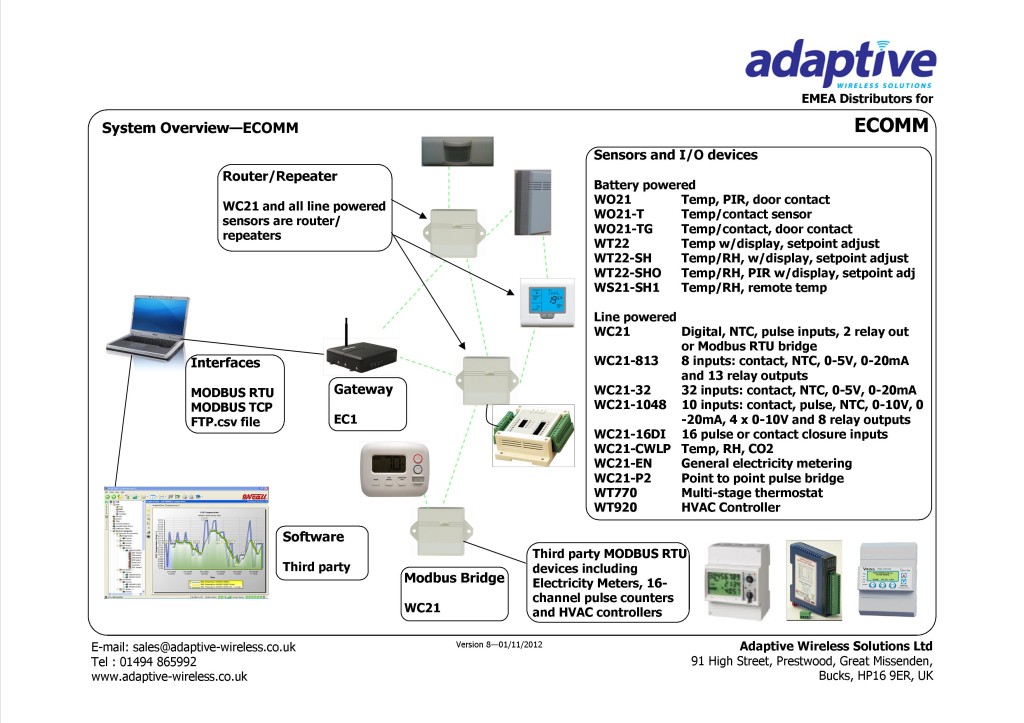Why wireless building management systems?
While building management system vendors’ prices have been holding steady, overall project costs continue to increase. The main cost of any building-services project is now labour. Building management system projects are no exception and typically 60% of the project cost is for wiring alone. The answer to this dilemma lies in the use of wireless building management systems.
Compatibility with virtually all commercially available building management system brands is assured through use of industry-standard interface protocols. A wide range of battery-powered sensing types makes installation extremely fast and economical with very little disruption to building operation when compared with wired systems.
Refurb and new build
Refurbishment projects can gain even more from a wireless solution. Given the dramatic increases in energy costs and demands of Part L of the Building Regulations, existing building owners are trying to reduce energy consumption. Many control systems are well over 10 years old and in need of significant upgrades. But high installation costs are potentially holding them back. Wireless building management systems can unblock many of these projects and result in significant savings with attractive pay back periods.
Low disruption and fast install
Building owners and operators are often nervous about the potential disruption costs while works are ongoing. A wireless solution is ideal for retrofit projects, offering little or no disruption, an accelerated project roll-out, avoidance of out of hours work costs and a quicker return on investment.
Effectively Manage Change
Office churn and repurposing of space is another major issue for building management systems. Buildings now need to be flexibly re-fitted based on the requirements of new tenants or simply changes in business requirements. With a wireless building management system changes such as moving walls and office cubicles is greatly simplified. Being able to use the same wireless backbone for several areas also reduces engineering, construction, commissioning and operating costs over the entire life of the building
Key features of wireless sensor networks include:
- Reliable operation – the self-healing, self-forming features of the best wireless mesh sensor networks make installation quick and flexible
- Easily integrated – compatibility with virtually all commercially available building management system brands is assured through use of industry-standard interface protocols including Modbus, BACNet and LON
- Quick to install – battery-powered sensing for the most commonly required inputs can make installation extremely fast which minimizes costs and causes very little disruption to building operation when compared with wired systems
- Wide range of sensors – with a wide range of integrated sensor types including temperature and humidity, PIR, contact closure and pulse inputs as well as support for attachment to 4-20mA and 0-10V sensors the range of sensing inputs caters for all the common measurement needs
- Flexible location – the mesh networking capability makes it easy to provide resilient and reliable wireless coverage across a building or campus, including penetration through one or more floors of typical structures. Sensors can then be put wherever they are needed and moved around at will to optimize system performance
For more information see our BMS Extension Solution Guide or take a look at our Project List.
For more information please call us on 01494 865992 or click here


SlideShare
Twitter
Facebook
YouTube
LinkedIn